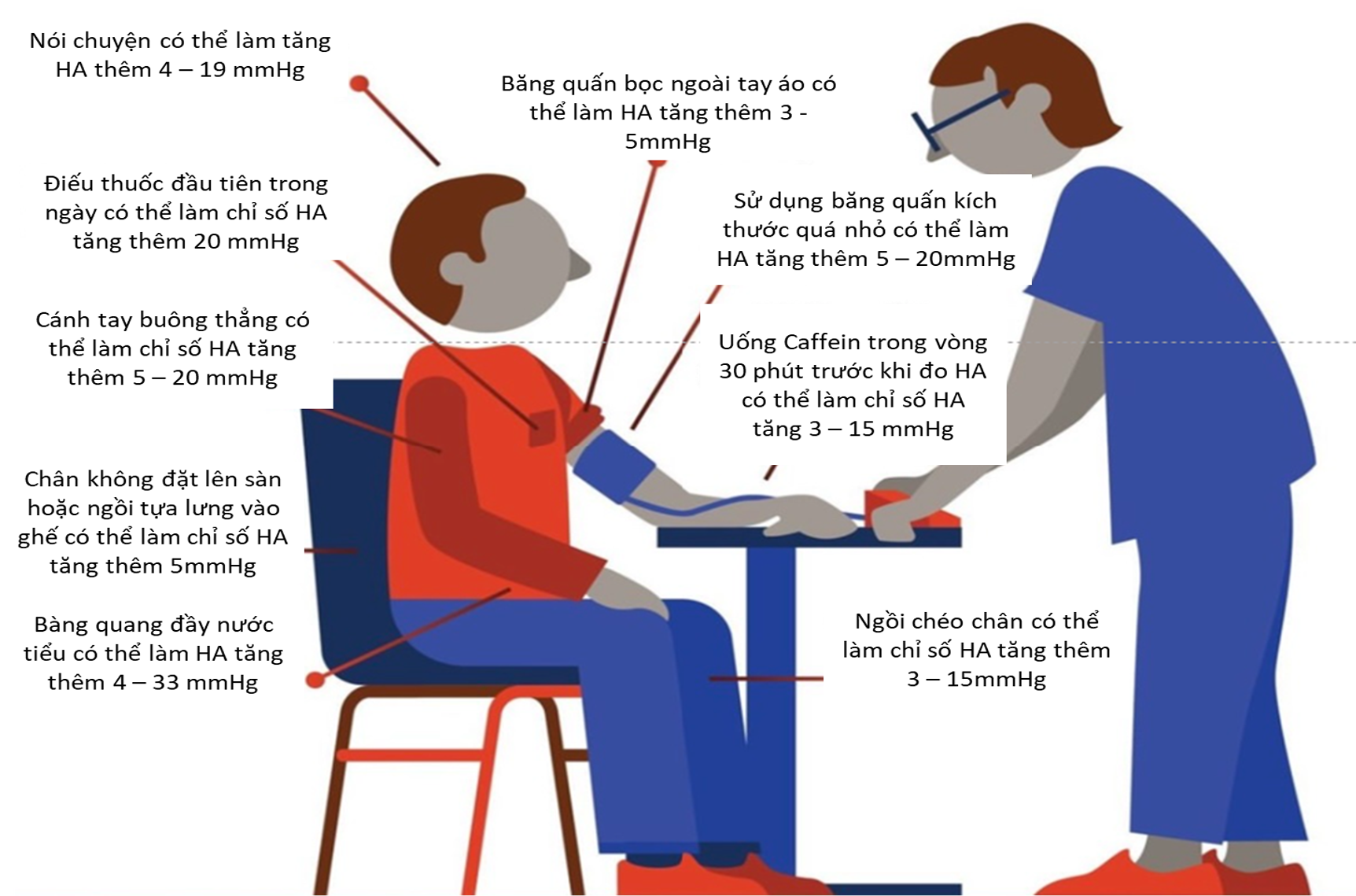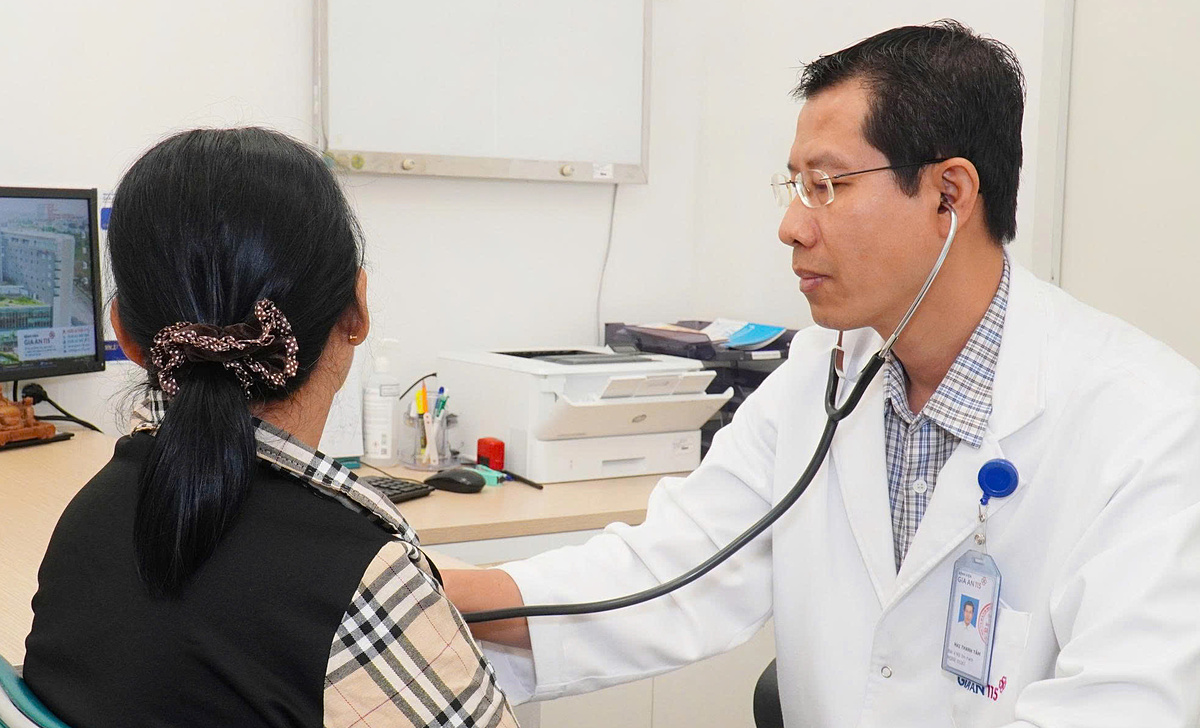Many patients wonder why their blood pressure readings at home are high, while the results at the hospital are normal. Do they really have high blood pressure, or is the measuring device inaccurate?
According to Doctor Mai Thanh Tam from the Examination Department of Gia An 115 Hospital, this discrepancy is usually not due to a faulty device, but stems from errors during the measurement process such as posture, timing, and lifestyle habits.
Incorrect measurement can lead to two serious consequences: a person with normal blood pressure being misdiagnosed with hypertension, or, more dangerously, a person with actual hypertension being overlooked, leading to inappropriate treatment. Meanwhile, home blood pressure monitoring is important for self-management and assists doctors in creating accurate treatment plans, especially for those with underlying conditions like cardiovascular disease, diabetes, or kidney disease.
Doctor Tam emphasized that blood pressure is a very sensitive indicator, easily affected by mood or external factors. Without following the correct procedure, the measured result can differ by up to 30 mmHg from the actual value – a large enough error to completely change a doctor's treatment decision.
Some errors that cause blood pressure readings to be higher than actual:
| Error | Explanation |
| Talking while measuring | Activates the sympathetic nervous system, causing the heart to beat faster and blood vessels to constrict, leading to a temporary increase in blood pressure. |
| Smoking before measuring (especially the first cigarette of the day) | Nicotine in cigarette smoke stimulates the sympathetic nervous system, causing vasoconstriction, increased heart rate, and increased blood pressure. |
| Drinking coffee before measuring | Caffeine causes the heart to beat faster and blood vessels to constrict, leading to a temporary increase in blood pressure. |
| Crossing legs | Blood vessels are compressed, increasing vascular resistance and blood pressure. |
| Not leaning back, lack of arm support | Not leaning back against a chair causes muscle tension, stimulating a faster heart rate and increased blood pressure. If the arm is unsupported, arm muscles must tense to hold it up, further increasing blood pressure. Placing the arm too low also leads to higher readings. |
| Cuff too small or placed too low towards the elbow. | Due to gravity: the lower the position, the higher the resistance and blood pressure. If the cuff is not wrapped tightly or is skewed to one side, the device must apply higher pressure to compress the artery, resulting in falsely elevated blood pressure readings. |
| Measuring while needing to urinate | Stimulates the sympathetic nervous system, increasing blood pressure. |
| Measuring after exercise | After light (like walking, housework) or strenuous (like running, climbing stairs) exercise, the heart beats faster and blood vessels constrict to supply blood to the muscles, raising blood pressure. |
| Cold environment | Blood vessels constrict and the heart beats faster to maintain body heat, increasing blood pressure. |
| Using substandard equipment | Incorrectly applies pressure to the artery, causing the device to record higher or lower blood pressure than the actual value. |
Errors that cause blood pressure readings to be lower than actual:
| Error | Explanation |
| Arm positioned higher than the heart | Gravity reduces blood pressure at the measurement site, leading to lower results. |
| Cuff too loose or wrapped too high towards the shoulder | Does not adequately compress the artery, leading to inaccurate pressure readings and lower blood pressure results. |
| Measuring after meals | Blood flows to the stomach for digestion, reducing blood pressure in peripheral arteries. After eating, the parasympathetic system is activated, further lowering blood pressure. |
 |
Errors when measuring blood pressure. Image from the 2024 ACC (American College of Cardiology) hypertension guidelines. |
"Even small errors are enough to change treatment decisions," Doctor Tam said. If blood pressure is falsely elevated, patients may be prescribed unnecessary medication.
Conversely, falsely lowered blood pressure can lead doctors to underestimate the risk of stroke, myocardial infarction, heart failure, and kidney damage. Therefore, accurate home measurement is crucial for effective treatment.
How to accurately measure blood pressure at home:
Preparation before measurement: Measure in a quiet room, rest for at least 5 minutes. Do not measure blood pressure within 30-60 minutes of drinking coffee, smoking, or strenuous exercise. Urinate before measuring.
Use standard equipment: Use an upper arm blood pressure monitor with the correct cuff size (cuff height should be equal to or greater than 2/3 of the upper arm length), check batteries and calibrate regularly.
Correct posture: Sit on a chair with back support, feet flat on the floor (not crossed), arm at heart level.
For the first blood pressure measurement, measure both arms. If the difference between the two arms is greater than 10 mmHg, inform your doctor during your visit and use the arm with the higher reading as the standard for subsequent measurements.
Timing: Measure blood pressure twice a day (in the morning upon waking, before eating, before taking medication, and in the evening before bed). Take two readings each time, 1-2 minutes apart. Record the results, calculate the average, and share with your doctor. If the two readings differ by more than 5 mmHg, take 1-2 more readings and use the average.
Do not measure too many times in a row, as measuring more than 3-4 times per session can cause discrepancies due to psychological factors or irritation of the arm.
 |
Doctor Tam examining a patient. Photo: Nguyet Thu |
Le Phuong












